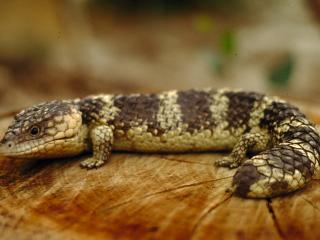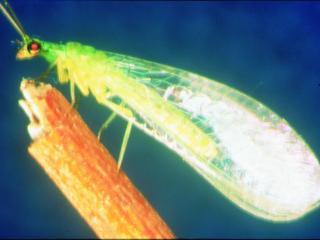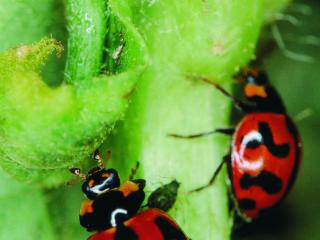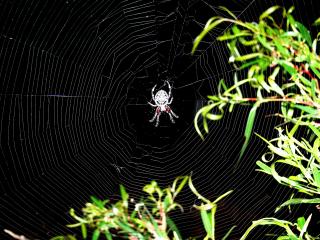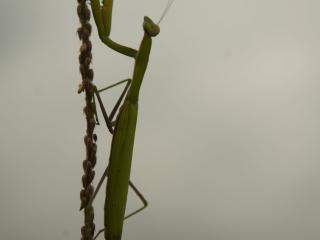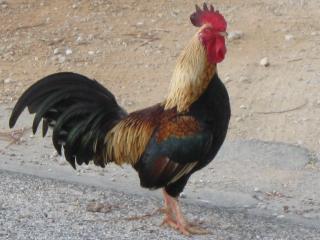About beneficial organisms
Beneficial organisms can be grouped into insects, pathogens and nematodes, and vertebrates. To encourage beneficial organisms into your garden it is important to minimise insecticide and herbicide use and provide natural habitats and shelter. For example, ponds can attract frogs while native trees and the absence of cats will encourage native birds and lizards.
Some plants are 'lures' for beneficial organisms, providing both shelter and food. These include plants in the parsley (Apiaceae), and sunflower or daisy families (Asteraceae).
Plant herbs like parsley, dill, caraway and coriander and flowering dahlias, daisies, asters, cosmos, calendula, zinnia, sunflowers and native plants to attract birds and beneficial insects into your garden.
Beneficial insects
Some beneficial insects can become so numerous that gardeners may require identification, fearing that they are a new pest. There are many different species of beneficial insects and it is beyond the scope of this article to describe them all. Often a beneficial insect may attack only one pest species.
Most insecticides kill beneficial insects along with pests. Beneficial insects can be bought from suppliers to tackle unwanted pests, however, it usually takes time for beneficial insect numbers to 'catch-up' with pest outbreaks and control them.
Types of beneficial insects
There are two main groups of beneficial insects:
Predators — attack and eat other insects. Either adult or larvae, or both may be predatory.
Parasites — lay eggs on or in other insects. The eggs hatch and the developing larvae consume the host, usually from the inside.
Other beneficial insects perform many useful and important functions. For example, dung beetles bury animal droppings; weed-eating insects are being introduced to control dock, Paterson's curse, and double-gees; and bees pollinate flowers and produce honey.
Bugs and beetles
Predatory bugs
Bugs are a large group of insects which include many plant pests. However, they also include important natural enemies of other insect pests. Bugs have sucking mouthparts which they use to draw up plant juices and the juices of their prey. Unlike beetles, bugs have no pupal stage.
Predatory beetles
Beetles are a very large and diverse insect group. Beetles can be distinguished from bugs because they have mandibles (chewing, rather than sucking mouth parts), a rigid pair of fore wings which is often mistaken for a shell, with a pair of fine, hind wings folded beneath. Unlike bugs, beetles have larval, pupal and adult stages.
Predatory mites
Predatory mites feed on the young stages of thrips and some mites. Predatory mites tend to move much faster than pest mites and are often bright red or yellow in colour.
Lacewings
Lacewing larvae are predators of a wide range of pests including aphids, moth eggs and small larvae, scales and whiteflies. Lacewings occur naturally and are most common in spring; they are attracted to light and can sometimes be found near light sources. The larvae are often called trash bugs because of their habit of putting the remains of their prey on their backs. The adults are bright green or brown and have delicate, lacey wings, hence the name.
Parasites
Parasites deposit eggs on or into the pest or its eggs. The larva then hatches and ultimately consumes and kills the pest. Parasites tend to be host-specific, that is, they will only attack a particular species of pest. Most species of parasite are either wasps or flies.
Spiders
Spiders are voracious predators that feed on a wide range of pest insects. It is estimated that the weight of insects eaten annually by spiders outweighs the total weight of the entire human population! All spiders spin silk, but not all build webs for the purpose of catching prey.
Spiders such as the common wolf spider run down their prey as would a wolf, whilst a trapdoor spider lays in wait in its burrow until some prey happens past. Hunting spiders can play a part in controlling cockroaches in the house, whilst the unsightly webs of black and garden spiders contribute to control of flying insects in the garden.
It is therefore beneficial to keep spider-activity at a reasonable level in home and garden. Be careful though, as species such as the redback spider can give a nasty bite.
Praying mantids
Praying mantids eat whatever they can catch, including pests. Mantids are found on leaves, flowers and the branches of plants. They can blend into the background, making them difficult to see. Mantids use their two front legs to capture and hold prey.
Hover flies
Hover fly larvae are often found among large populations of aphids. Adults feed on pollen and nectar and are often mistaken for bees. However, unlike bees, adults will hover in the same place. The larvae feed on aphids and other soft-bodied insects.
Beneficial pathogens
Pathogens
Include target-specific bacteria, fungi or viruses, of which there are some commercial preparations available. Bacillus thuringiensis (BT) is one of the most commonly used pathogens. It controls young caterpillars of moth and butterfly pests.
Entomopathogenic (parasitic) nematodes
These are parasitoids because they will kill their host in the process of completing their life cycle.
Entomopathogenic nematodes are microscopic, simple round worms. They kill insects by entering them and releasing a bacterium that multiplies within the insect. The bacterium, harmless to humans and other animals, serves as a food source for the nematode.
Beneficial vertebrates
These are birds including chickens and ducks, frogs and other vertebrates which consume insects, snails and slugs as part of their diet.
Frogs
Frogs eat mosquitoes, cockroaches, flies and slaters. Because their presence is considered to be a reflection of good environmental health, they are often referred to as an 'indicator' species. Frogs need moisture to survive, and also require food, shelter and places to breed. Build a pond to attract frogs.
Birds
Birds are part of the natural ecosystem, and many are attracted to insects and flowers. Plant local native plant species and create a diverse community of different insects and flowers to bring birds into your garden.
Commercially available beneficial organisms
The increasing popularity of integrated pest management (IPM) which facilitates pest control with a minimum of chemicals has resulted in the formation of the Australasian Biological Control Association (ABC).
Before importing beneficial organisms from other states, consult with Quarantine WA, telephone +61 (0)8 9334 1800, to confirm if such organisms are permitted into Western Australia.
Unfamiliar pests
Unfamiliar pests could cause significant problems for our primary industries and environment if they were to become established in Western Australia.
So if you see an unfamiliar pest please contact the Pest and Disease Information Service (PaDIS) on Freecall: 1800 084 881 or send a photograph or email enquiries@agric.wa.gov.au. Read sending specimens for identification before posting or delivering a sample to the Pest and Disease Information Service, Baron-Hay Court, South Perth WA 6151.


